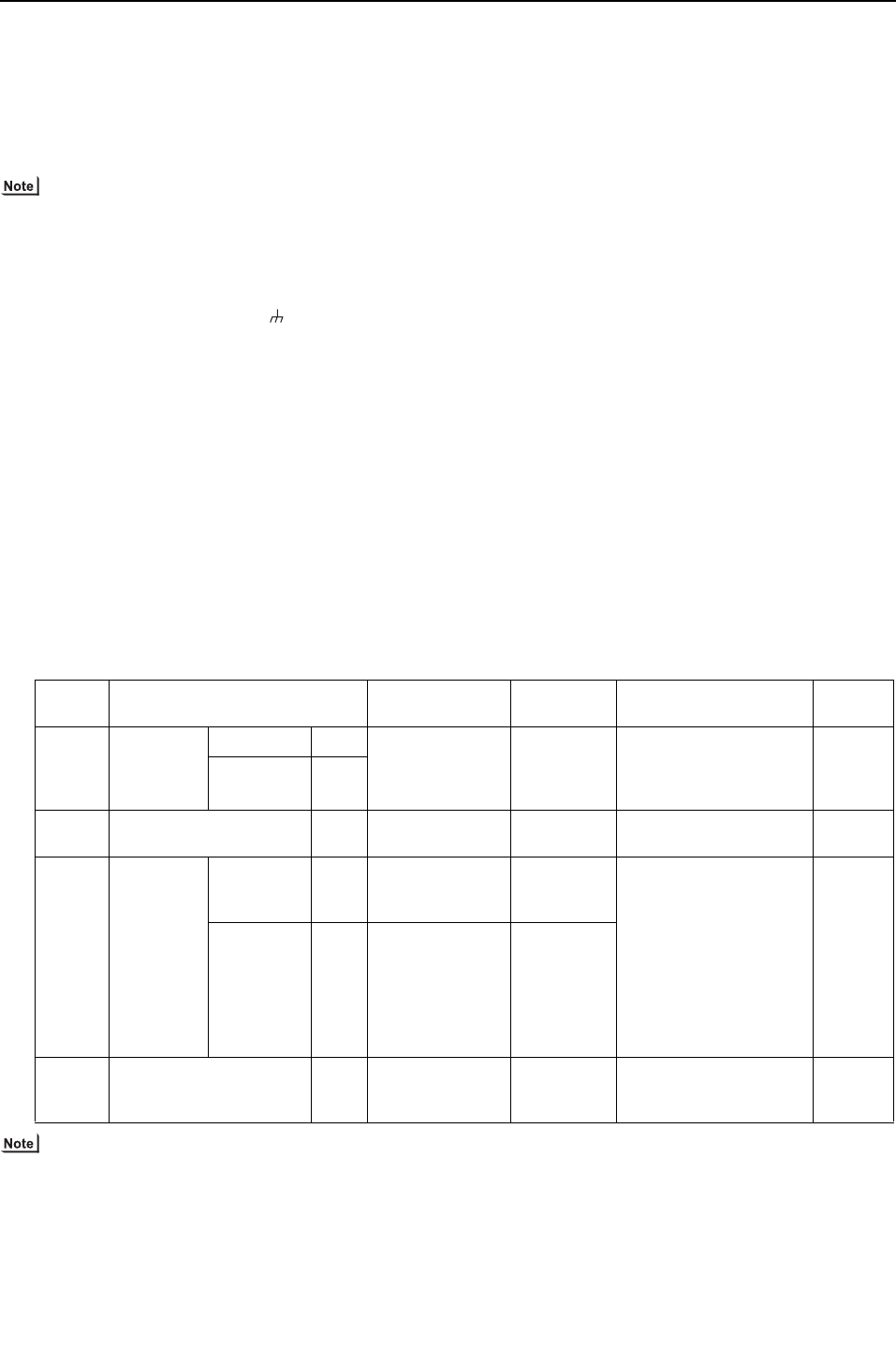
- 28 -
[ II Restrictions ]
GBHWE08040
(4) Wiring method
1) Indoor/outdoor transmission line
Daisy-chain terminals M1 and M2 on the terminal block
for indoor-outdoor transmission line (TB3) on the outdoor
units (OC, OS1, OS2) (Note 1), and terminals M1 and M2
on the terminal block for indoor-outdoor transmission line
(TB5) on each indoor unit (IC). (Non-polarized two-wire)
Only use shielded cables.
The outdoor units in the same refrigerant circuit are au-
tomatically designated as OC, OS1, and OS2 in the or-
der of capacity from large to small (if two or more units
have the same capacity, in the order of address from
small to large).
Shielded cable connection
Daisy-chain the ground terminal ( ) on the outdoor
units (OC, OS1, OS2), and the S terminal on the terminal
block (TB5) on the indoor unit (IC) with the shield wire of
the shielded cable.
2) Transmission line for centralized control
No connection is required.
3) MA remote controller wiring
Connect terminals 1 and 2 on the terminal block for MA
remote controller line (TB15) on the indoor unit (IC) to the
terminal block on the MA remote controller (MA). (Non-
polarized two-wire)
When 2 remote controllers are connected to the sys-
tem
When 2 remote controllers are connected to the system,
connect terminals 1 and 2 of the terminal block (TB15) on
the indoor unit (IC) to the terminal block on the two MA
remote controllers.
Set one of the MA remote controllers to sub. (Refer to
MA remote controller function selection or the installation
manual for the MA remote controller for the setting meth-
od.)
Group operation of indoor units
To perform a group operation of indoor units (IC), daisy-
chain terminals 1 and 2 on the terminal block (TB15) on
all indoor units (IC) in the same group, and then connect
terminals 1 and 2 on the terminal block (TB15) on the in-
door unit on one end to the terminal block on the MA re-
mote controller. (Non-polarized two-wire)
When performing a group operation of indoor units that
have different functions, "Automatic indoor/outdoor ad-
dress setup" is not available.
4) LOSSNAY connection
Connect terminals M1 and M2 on the terminal block
(TB5) on the indoor unit (IC) to the appropriate terminals
on the terminal block (TB5) on LOSSNAY (LC). (Non-po-
larized two-wire)
Interlock operation setting with all the indoor units in the
same system will automatically be made. (It is required
that the Lossnay unit be turned on before the outdoor
unit.)
Refer to "[5] 2. Manual address setup for both indoor and
outdoor units" in the following cases: performing an inter-
lock operation of part of the indoor units in the system
with a LOSSNAY unit, using LOSSNAY alone without in-
terlocking it with any units, performing an interlock oper-
ation of more than 16 indoor units with a LOSSNAY unit,
or connecting two or more LOSSNAY units to indoor
units in the same system.
5) Switch setting
No address settings required.
(5) Address setting method
The outdoor units in the same refrigerant circuit are automatically designated as OC, OS1, and OS2.
Proce-
dures
Unit or controller
Address setting
range
Setting
method
Notes
Factory
setting
1 Indoor unit Main unit IC No settings re-
quired.
- To perform a group opera-
tion of indoor units that
have different functions,
refer to [5] 2.(page 29)
00
Sub unit IC
2 LOSSNAY LC No settings re-
quired.
-00
3MA
remote con-
troller
Main
remote con-
troller
MA No settings re-
quired.
-Main
Sub
remote con-
troller
MA Sub
remote controller
Settings to
be made ac-
cording to
the remote
controller
function se-
lection
4 Outdoor unit (Note) OC
OS1
OS2
No settings re-
quired.
-00





















